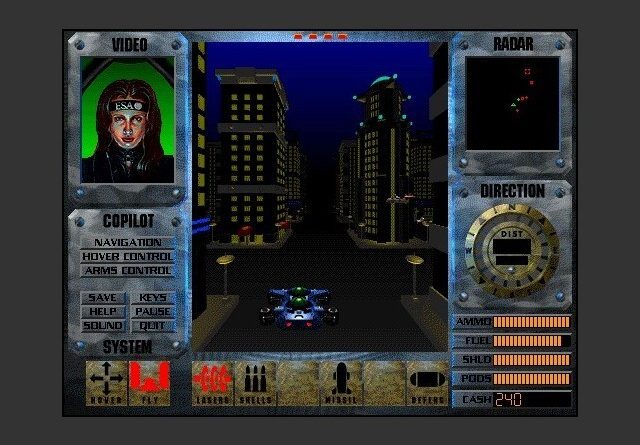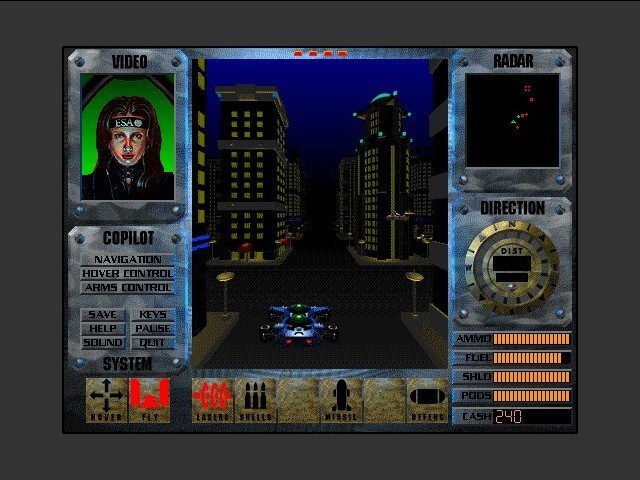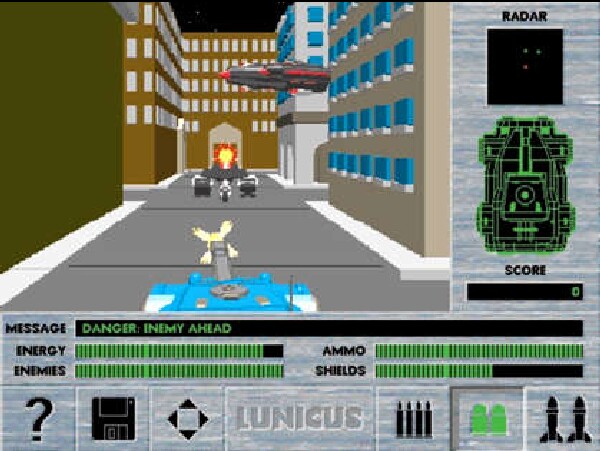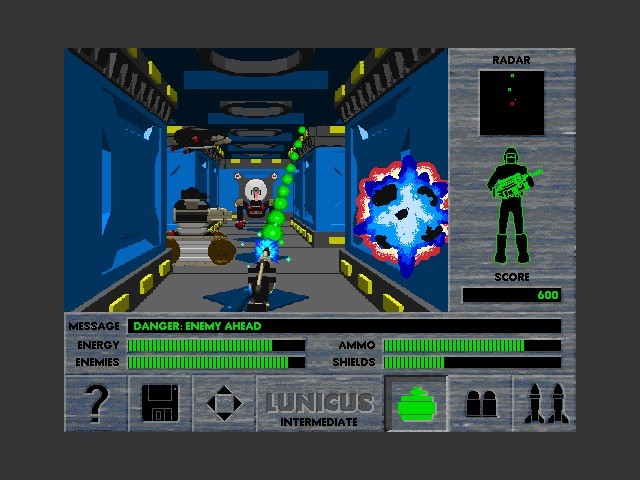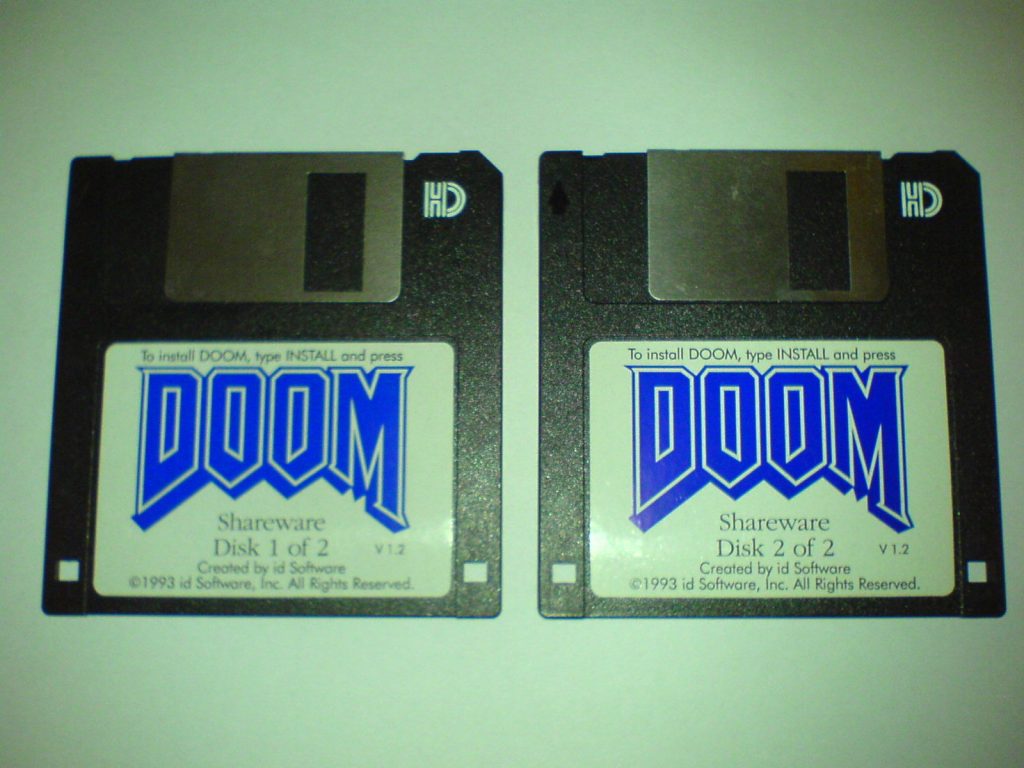Flashback: Jump Raven, A Forgotten 1994 Video Game, Predicts 2021.
New York City flooded? Decaying infrastructure? Climate change, threats to biodiversity? And neo-Nazis battling a disorganized government for control? Sure, it’s 2021! But it was also referenced in a largely forgotten 1994 video game called Jump Raven, that somewhat sloppily imagined a dystopian future of New York City. It hasn’t aged terribly well. But in retrospect, it looked oddly prescient, especially given the current news.
Video Gaming in the 1990’s and early 2000’s
This #FlashbackFriday was borne of actual flashbacks, while watching news coverage of northeastern flooding from Hurricane Ida, to playing a lot of video games as a kid. I confess that I did a decent amount of gaming. I wasn’t forbidden from playing console games, but my parents didn’t really believe in them, saying that if I wanted to get a console, I could get a job and save up for it. (I ended up doing this to the tune of buying an N64 at a garage sale for $25 in high school). But computers were different, they thought, as they could be a tool for learning as well as, ya know, for wasting hours of one’s life. One game I don’t think about much because, well, it wasn’t that great in comparison to many competitors on the market at the time, came in this discount bundle pack marketed by now-defunct Canadian company Aztech New Media, and I found myself thinking more about it as I look back 20 or 30 years to what people were imagining the near future was like as far as dystopian governments and climate change. Jump Raven checks all of the boxes– threats to biodiversity, powerful neo-Nazis, and an NYC subway system flooded by rising sea levels.
The Game Itself
The game itself is what was at the time a fairly novel take on the classic arcade shooter. Your character is a bounty hunter, a fixer-of-last-resort, contracted by a new world order-type government organization to retrieve some top secret genetic materials that have been stolen from something that sounds sort of like the Svalbard seed vault. You pilot a hi-tech hovercraft through the darkened “streets” of NYC, chased by– and chasing- any number of profane foes. There is a soundtrack of four whole songs you can play, which are all sort of plays on real-life bands, etc. The intro references a globally-warmed, high-moisture planet battling sea level rise.
There’s not really much to say about the plot or the story, although there is an attempt to incorporate some humor. Hot on the tail of Star Trek: The Next Generation, Blade Runner (1982), and Total Recall (1990), the optimistic, post-Cold War 1990’s were full of fanciful imagination of a near-future with cyborgs and straight up robots. Let’s remember that 1991 brought us Super Baseball 2020, which promised us robotic baseball players in 2020. And women! *in a heavy New York accent* I mean, a woman ball player, in the MLB!? What the hell happened, people!? There’s also a character in Jump named Limbaugh who is Black, and gets offended when you ask him if he’s indeed related to Rush, which I find kind of hilarious, seeing as he seems to know that his forebear was, well, kind of awful. Rush was, at the time, the shock jock du jour. Or really de décennie, really, given that he retained that title until his death just this year. Truly tragic. Moxy Früvous even wrote a song about him in 1996– but I digress. Suffice it to say, it kind of captures the zeitgeist in a weird way.
2D Transitions to 3D
Jump Raven followed on the tail of Lunicus, a game where you have to walk around the lunar space station and kill aliens. Or something. The plot of either of these games isn’t really terribly important (although it’s interesting that Jump Raven did hit so many 2021 points so hard). The impressive thing here involved the transition from simple, 2D environments in arcade games to the primitive 3D era of the 1990’s. Arcade games were quite responsive, and the transition to 3D-adjacent graphic environments made speed a bit of a challenge. Lunicus and Jump handily broached this topic through clever backend engineering at a time when computers were still relatively slow, and when realtime rendering was a feat.
Knoxville, TN-based developer Cyberflix would go on to produce the platinum 1996 title, Titanic: Adventure Out of Time, undoubtedly the company’s most famous production, which also, no doubt, was able to handily capitalize on the popularity of the James Cameron film released the following year. Cyberflix’s founder, prolific software developer and entrepreneur William Appleton, would go on to develop more games– as well as Supercard, a high-level programming language slash development environment that is still sort of a thing (compatible with pre-10.15 Macs). Supercard is a spiritual successor to Hypercard (1987-1998), which was an easy-to-use development environment for the Macs of yore that enabled ordinary shlubs like 12-year-old me to write their own “games” that operated with simple instructions using cards. Developer Silicon Beach, which also developed hits like SuperPaint and Beyond Dark Castle, would go on to be acquired by Aldus, which was, in turn, swallowed up by Adobe in 1994– to the tune of nearly half a billion dollars, a princely sum at the time.
The Different Business of 1990’s Gaming
In 1995, the gaming world was transitioning from what one might call Gaming 1.0, using sprites, static environments, and, if you were really fancy, animated cut scenes, to using immersive 3D environments rendered in realtime. The 3D environments of yore, as immortalized by the likes of Duke Nukem (1991), Wolfenstein 3D (1992), or Doom (1993), overlaid primitive sprites onto what now seem like monstrous, chunky pixels on things like walls or floors. Quake (1995) and Unreal (1998) would change the game, literally and figuratively, with software engines that took advantage of much faster computers to allow realtime rendering of comparably believable 3D environments.
Let’s also remember that the Playstation was released in 1994 and the Nintendo 64 in 1996, both of which involved what were at the time utterly mind-blowing advancements in gaming technology. Chunky pixels that moved incrementally gave way to smooth, polygonal forms. We now take this for granted– as do Kids These Days with their Nintendos Switch, etc.
Prior to the advent of more specialized software, though, there was a far greater prevalence of a thing called shareware, the equivalent of what we now know as “freemium,” but with an emphasis on the sharing. The interweb was fragmented. Wikipedia has an interesting section on it that tells the story pretty well:
Prior to the popularity of the World Wide Web and widespread Internet access, shareware was often the only economical way for independent software authors to get their product onto users’ desktops. Those with Internet or BBS access could download software and distribute it amongst their friends or user groups, who would then be encouraged to send the registration fee to the author, usually via postal mail. During the late 1980s and early 1990s, shareware software was widely distributed over online services, bulletin board systems and on diskettes. Contrary to commercial developers who spent millions of dollars urging users “Don’t Copy That Floppy”, shareware developers encouraged users to upload the software and share it on disks.
This was the original viral marketing, except instead of relying on influencers to retweet your dumb ass, or what have you, it was really a matter of building a compelling product, creating a compelling package, and figuring out how to distribute it, often through the US mail (or perhaps over a 14.4k modem). This was in the days when a video game could be programmed by a single human or two, as opposed to teams of hundreds of workers. We don’t really have that anymore. Although we come close with popular games like the fantastic, 8-bit adventure of Stardew Valley (2016) and the eerily Rust Belt-adjacent, animated Night in the Woods (2017).
From a business standpoint, Aztech, for its part, did a pretty clever thing in getting companies to allow it to sell these discount bundles of their products. I recall that you could spend $40 or $50 and buy ten games that were a couple of years old, versus buying games for $30-50 a pop. Aztech kind of dropped off the radar at some point, but outside of these valu-packs, or whatever, they also developed a comprehensive expansion pack for the then-smash-hit-and-still-legendary game Starcraft (1998), which received praise for its gameplay, but mixed reviews for being subpar to the high-budget Blizzard production.
Jump Raven might not have made a particularly indelible mark on the gaming industry, but its connections and history seem to endure, particularly as a product of some oddly prescient imagination of the occasionally-dystopian present day.
Check out Jump Raven on MyAbandonware. And please start, you know, caring about climate change. And biodiversity. And fighting Nazis.

